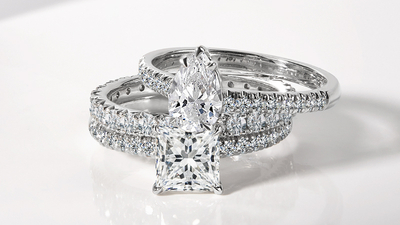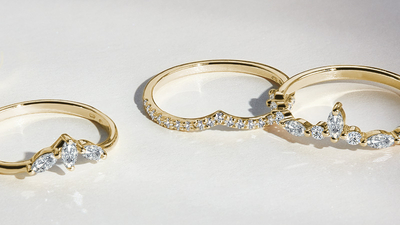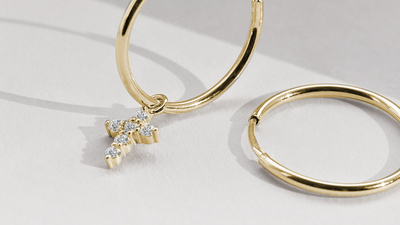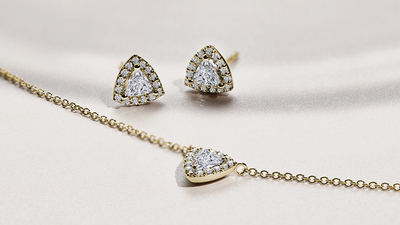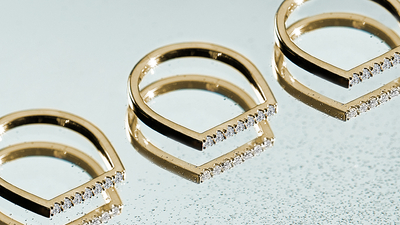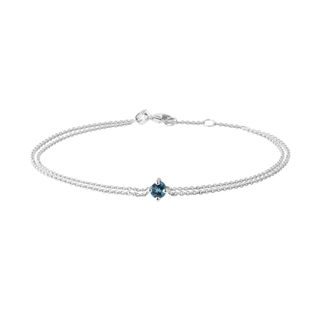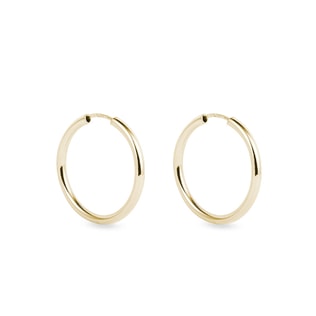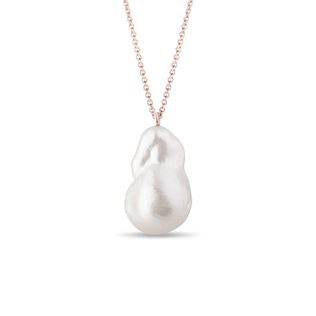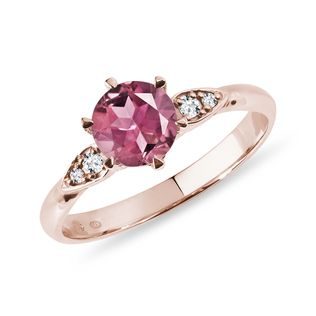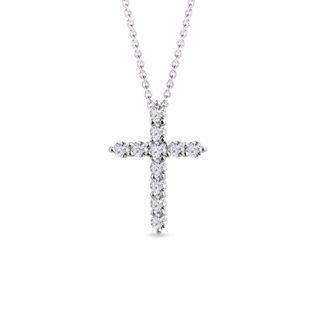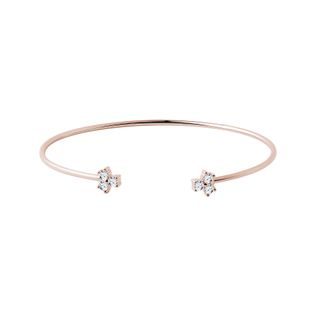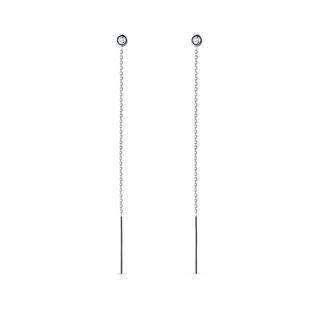Gold and other precious metals have been mined for thousands and thousands of years, and they have never ceased to fascinate us. People’s adoration traces all the way back to the Ancient Egyptians, some of the most famous masters of goldsmithing. But as they say, all that glitters is not gold, and the history of fake gold and other imitators is almost as long and rich as the history of these precious materials.
In the past, the art of minting was highly susceptible to forgeries. To combat this, measures for checking the authenticity of precious metals quickly swept across Europe. Hallmarking, which first occurred around the beginning of the 14th century and is still used nowadays, proved to be the perfect way to cut down on the fakes. The oldest surviving hallmarks come from England and France. Hallmarking in the Czech Republic was introduced by John of Bohemia. In the U.S., hallmarking is not legally required, but makers’ marks are used extensively as a proof of authenticity--the maker stamps his sign so people will know who sold them fake gold if they discover a fraud.
With the development of chemistry and physics, new methods have arisen to help us differentiate real gold and silver--methods which are used by jewelers and goldsmiths today.
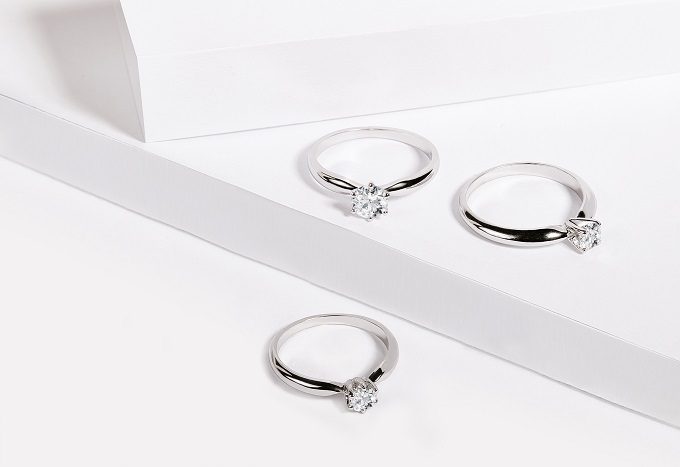
Simple tips and tricks for recognizing real gold
For those short on time, here are our best tips in a nutshell
- In the Czech Republic, Klenota’s homeland, the first thing you do is take a look at the hallmark. Here, it is required by law to stamp a national hallmark in a gold jewel – this is the only thing that guarantees the authenticity of your jewelry. There are two other manufacturer markings on a jewel: the purity mark, i.e. a three-digit code which is used to state the purity of the metal (the most common ones are 585 for 14kt gold, 750 for 18kt gold, and 925 for silver); and the maker’s mark, which is also used in the U.S., as mentioned above, i.e. a kind of “signature” which tells you who created the piece of jewelry (FYI: KLENOTA jewels are marked with the letters “KLE” in serif font in an oval).
- If you’re not sure about the metal in your jewelry and the marks on it don’t help, take your jewelry to an expert. Jewelry stores all around the world use modern spectrographs or spectrometers that can identify the presence of specific elements in the alloy, along with their percentage, i.e. the purity of the metal. This method is very accurate, and it doesn’t damage the jewel.
- Be warned: there are some methods of gold testing you can try at home, but they are not very reliable and some of them might damage your jewelry. We generally don’t recommend these methods
- If you have jewelry you wear often, look out for signs of discoloration. If you see another color peeking through a spot that’s particularly worn, your jewelry is probably only gold plated
- Of course, our best advice is to only buy jewelry from trustworthy and verified jewelry stores and always read the customers’ reviews first!
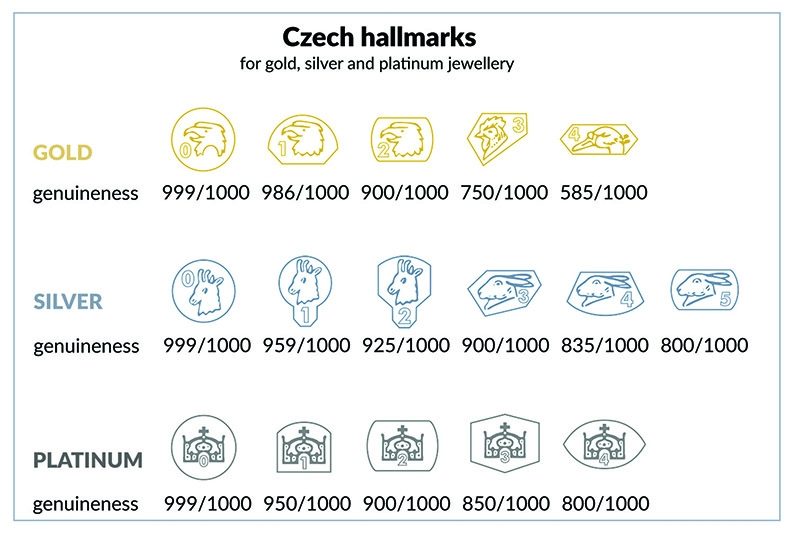
The basic properties of gold
Gold is found in nature as a pure metal (24 kt). It has a distinct yellow color; it’s resistant to chemicals; it’s a good conductor of electricity and heat; it’s not magnetic; and it doesn’t rust. Gold is highly dense, a property that’s crucial for gold panning, and it has a yellow streak, a very simple feature that distinguishes it from fakes, like pyrite.
Another important property of gold is its low hardness. Pure gold itself is actually very soft. Because of this, jewelry isn’t made with pure gold, but rather an alloy (this is what the karat system refers to). The metals that go into the gold alloys significantly influence the properties of the final alloy, specifically its hardness and color.

Gold jewelry isn’t always yellow
Combining gold and other metals to create these alloys creates a lot of room for creativity: especially with color! Nowadays, white gold has risen to the top of the jewelry scene. White gold usually contains nickel, manganese, or palladium; copper, zinc, silver, or rhodium can also be found in white gold, but less frequently. The nickel-free alloy, made with palladium, is also popular, since it’s better for people with nickel allergies or other sensitivities. It tends to be slightly darker and softer, so it’s often plated with white rhodium.
It is important to note that here at Klenota we use the description “white gold” to express the alloy the whole piece of jewelry is made of. Some jewelry-makers use “white gold” to describe yellow gold that has been plated with rhodium. Even though the rhodium plating gives the jewelry a white color, this thin layer plating may get worn over time, causing the jewel to lose its color and luster. We always recommend that you check that the jewelry’s certification document guarantees that your piece of jewelry is white gold. If you’re not keen on that pure, white color, try a piece of jewelry without the rhodium plating. You’ll get the color of the white gold alloy, which, with its slightly yellow tint, has a regal, elegant look about it.
Pink and red gold have also stepped into the spotlight again. This rosy color is created when copper is added to the alloy; interestingly, the added copper also gives the alloy a greater hardness! Gold can also come in other, less common colors, like blue (an alloy made with steel), green (an alloy with silver or cadmium), magenta (gold and aluminum in a 3:1 ratio), or grey (an alloy with holmium or manganese, silver, and copper). Purple gold, which hails from Singapore, is a novelty. It is an alloy of 80% gold and 20% other elements like aluminum and palladium.
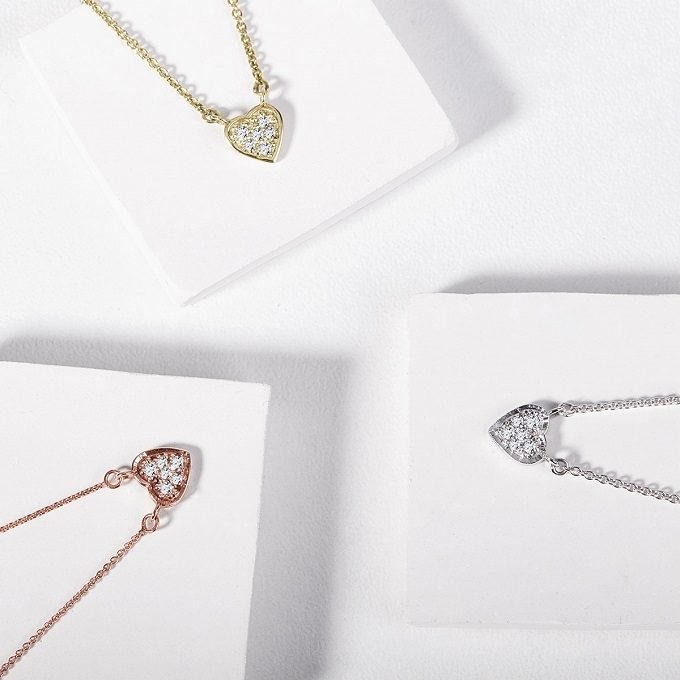
How to distinguish white gold from silver?
Truthfully, a silver jewel and a white gold jewel look the same in the end. Yes, the color of the alloys themselves are different, but because of the modern trend of rhodium plating, their surfaces will have the same bright white color. For silver jewels, rhodium plating is especially important, as it prevents the eventual blackening of the jewel. Rhodium plating also protects white gold: if your jewelry gets scratched, all you have to do is take the layer of rhodium off, polish the jewelry, and reapply another rhodium layer. With this method, there’s minimal, if any, damage to the gold itself.
So, then, how can you differentiate between silver and white gold? In the Czech Republic, hallmarks are reliable. In the U.S., however, the jewelry-maker is responsible for the authenticity of the metal they are selling; the maker will stamp his maker’s mark in the jewelry or on its packaging, letting everyone know who is accountable for those pieces. In the Czech Republic, gold jewels weighing at or above 0.3 g are required to have a national hallmark on them, along with the jewelry-maker’s hallmark. However, the national hallmark is not required for silver jewelry pieces weighing less than 3.49 g. Therefore, only the “925” purity mark is often used for sterling silver (the most common alloy in the Czech Republic).
So, which is better, white gold or silver? Although both are beautiful, silver jewelry is generally less scratch-resistant and less durable. If you aren’t careful, silver can be crushed, scratched, or otherwise deformed quite easily, and it can blacken when in contact with air and sweat (unfortunately, sometimes even the rhodium plating can’t prevent this).
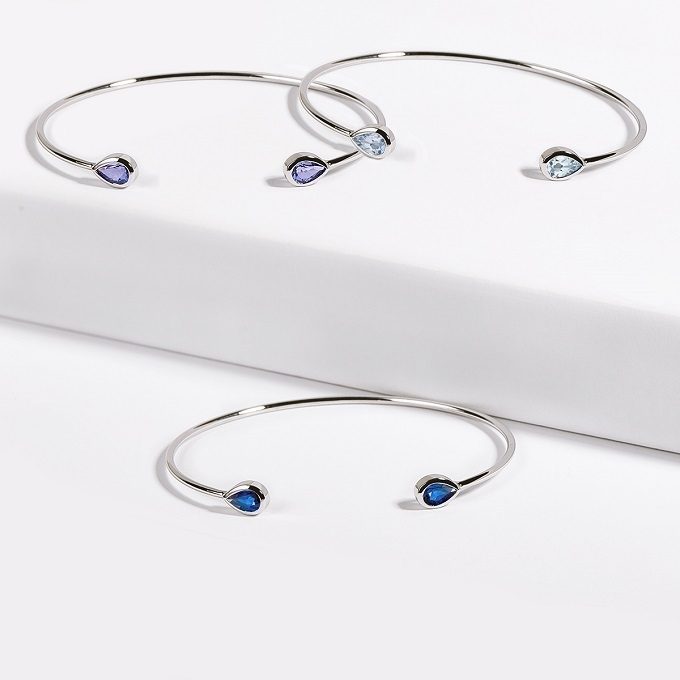
Gold testing at home
A professional who is well-versed in the different types of gold can usually sniff out a fake based on the color, weight, and feel of the jewelry. However, this can be a difficult process for the average Joe. Thankfully, we have a couple of tips and tricks for those of all gold experiences. For jewelry made in the Czech Republic, as discussed, always look for the hallmark. However, as hallmarks aren’t mandatory in the U.S., the best approach is to look for the maker’s mark on the jewelry or its packaging – if the jewelry-maker or seller is a well-established, reliable entity, you should be good to go. It is possible to test gold at home. As we stated, we do not recommend gold testing at home and always advise you take your jewelry to an expert if you have questions about authenticity. However, in case your curiosity is peaked, here are the more popular methods of at-home gold testing:
- The magnet test: Put a powerful magnet close to the jewelry – if it reacts, it’s not gold; this is a quick and non-destructive method but it’s not always reliable as forgers often use non-magnetic metals in their gold alloys in order to dupe this test.
- The streak test: scrape the edge of the jewel across an unglazed plate or the bottom side of a tile; true gold should have a yellow streak--a black scratch means the metal is not gold; obviously, this test is not ideal, since your jewelry will be damaged!
- The bite test: the bite test is a popular myth, but unfortunately you can’t always believe what you see in the movies; in theory, the deeper the teeth marks are, the greater the purity of the jewel – but we really don’t recommend biting jewelry, especially when you’re still in the store!
- The nitric acid test: this test is very risky, and extreme caution is necessary; put the jewelry into a stainless steel container, pour nitric acid on it, and observe the reaction – if the reaction is green color, you’ve got a fake; a milk-colored reaction usually indicates gold-plated silver, and no reaction means it is gold.
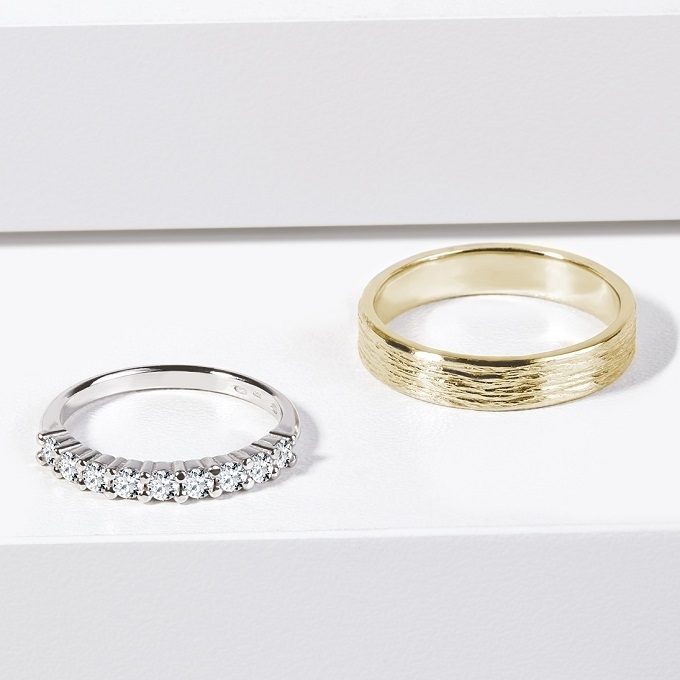
Professional testing in a jewelry store: the touchstone test
The oldest technique, used by people for centuries, is the touchstone test. It can be used both for testing the authenticity of gold as well as specifying its precise purity. It was done by the so-called “assayers” in the past, but today it is performed by almost every jeweler.
The test itself is performed on a stone, not on the jewel. The stone is usually fieldstone, slate, or radiolarite, which are used for their dark colors, rough surfaces, and resistance to acids. We take the jewel we want to test and draw a line on the stone (may cause minor, usually nondescript, scuffing). Then, we carefully pour nitric acid onto the stone to determine the authenticity of the gold. If the line doesn’t react to the acid, you’ve got yourself real gold.
We use testing sets to perform the touchstone test, which include “purity acids” and “testing needles.” We use the purity acids to determine gold purity by pouring different strengths of acids onto the line we made with the test jewelry until we are left with the one acid the line does not react to. Tests using the needles are a bit more accurate. The testing needles are tipped with different purities of gold. We will make a line with a needle next to the one made by the jewelry. We pour acid on both of them and observe how fast the reaction is, going one by one through the needles to find the reaction that is the most similar to the test jewelry. This method is quite reliable and with its help, we can determine the purity with an accuracy to 5 thousandth decimal point. In the Czech Republic, test acids can only be bought through registered jewelers or companies because they are subject to the Act on Poisons and Acids.

Laboratory and instrumental methods of gold testing
Over the years, we have developed more modern methods of testing metals. There are smaller, handheld testers that measure the gold’s conductive properties, but they are not very accurate. On the opposite hand, larger testers, like the spectrograph or spectrometer, are very accurate and are commonly used all over the world. These testers can detect the presence of specific elements in an alloy and then calculate the makeup of the metal in percentages. This is a big plus, as they test the authenticity and the purity of the metal at the same time! In each test, two measurements are taken from two different points in the metal, and the final values are then calculated from this data.
The last method is a chemical test: the cupellation method. This method has been used for a long time, including at the Czech Assay Office, and it is the most accurate method. However, the process is not only time-consuming, it’s destructive: the test sample must be melted. A piece is removed from the produced billet and used for testing. The sample (about 0.5 g) is weighed precisely, and then all the various metals are systematically removed from the test piece using different chemicals. The end product--the gold that remains--is transformed back into a billet and is weighed again. The difference between the weight of the original sample and the weight of the billet then determines the accurate content of gold, i.e. the purity.

